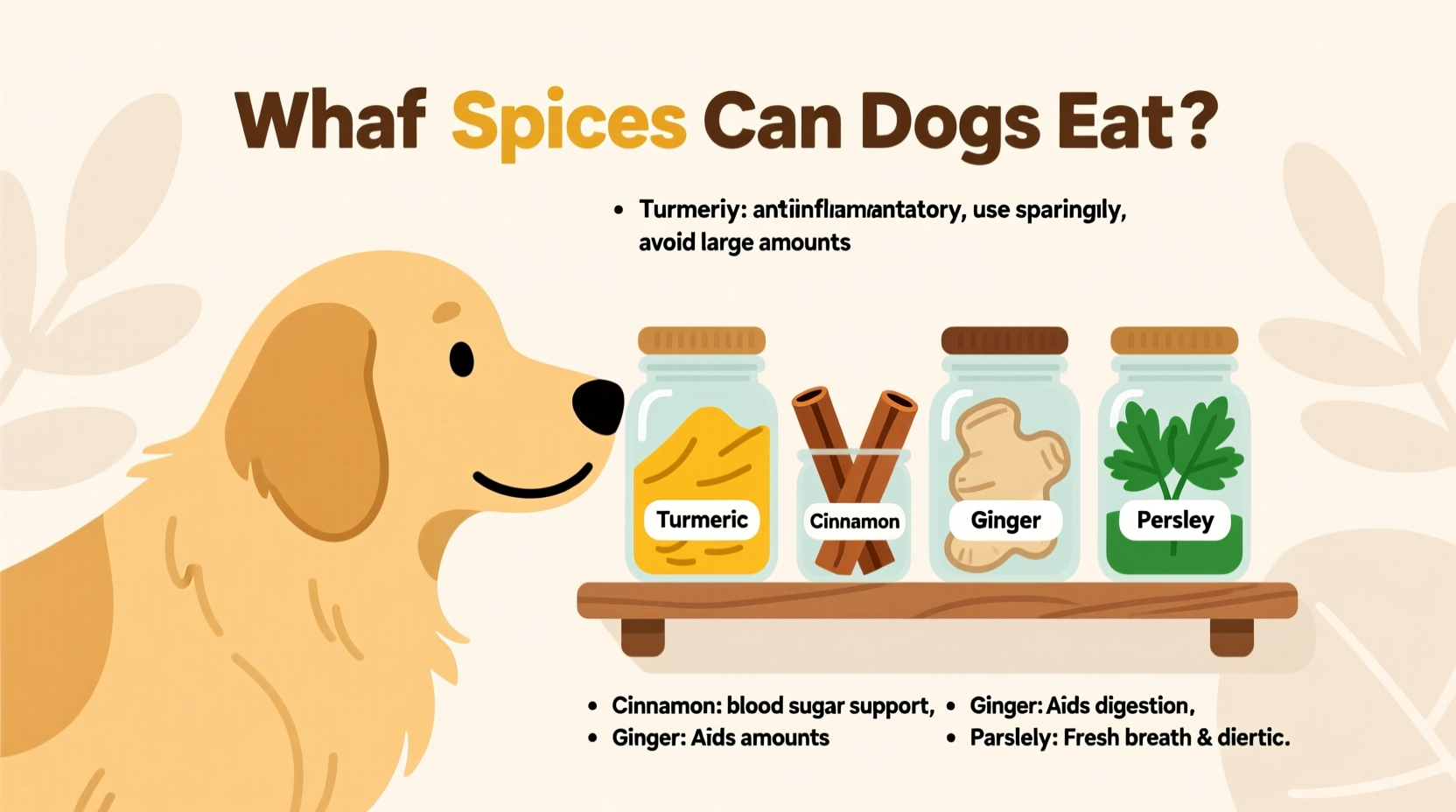Immediate Safety: Spices That Could Harm Your Dog Right Now
Before considering adding spices to your dog's food, you must know which ones pose immediate risks. According to the ASPCA Animal Poison Control Center, these common kitchen spices can cause serious health issues:
| Spice | Danger Level | Primary Health Risks | Safe Alternative |
|---|---|---|---|
| Garlic & Onion Powder | Extreme | Hemolytic anemia, gastrointestinal damage | Parsley (small amounts) |
| Nutmeg | High | Tremors, seizures, nervous system disruption | - |
| Chili Powder/Cayenne | Moderate-High | Mouth irritation, digestive upset | - |
| Black Pepper (excessive) | Moderate | Digestive irritation | Small amounts generally safe |
Dr. Justine Lee, board-certified veterinary toxicologist, emphasizes that "even small amounts of garlic or onion powder can accumulate to toxic levels in dogs over time". Unlike humans, dogs lack the enzyme necessary to properly metabolize certain compounds in these spices.
Safe Spice Options: What You Can Add to Your Dog's Food
When used in appropriate amounts, some spices offer health benefits for dogs. The American Veterinary Medical Association recognizes these spices as generally safe when properly administered:
Turmeric: The Anti-Inflammatory Powerhouse
Turmeric contains curcumin, which has documented anti-inflammatory properties. A 2020 study published in Veterinary Sciences showed turmeric supplementation reduced joint pain in dogs with osteoarthritis. For safe administration:
- Use only pure turmeric powder (no curry blends)
- Maximum 1/8 teaspoon per 10 pounds of body weight
- Mix with healthy fat (like coconut oil) for better absorption
- Always consult your vet before long-term use

Ginger: Digestive Aid
Ginger can help with motion sickness and digestive issues. Research from the National Center for Biotechnology Information indicates ginger's effectiveness for nausea relief extends to canine patients. Safe usage guidelines:
- Fresh ginger is preferred over powdered
- Small dogs: 1/4 teaspoon grated ginger
- Medium dogs: 1/2 teaspoon
- Large dogs: 3/4 teaspoon
- Limit to 2-3 times weekly
Context Boundaries: When Safe Spices Become Risky
Even generally safe spices have important limitations. Understanding these context boundaries prevents accidental harm:
- Puppies under 6 months: Their digestive systems are too sensitive for any added spices
- Dogs with medical conditions: Turmeric may interact with blood thinners; ginger can affect blood sugar
- Pregnant/nursing dogs: Avoid all supplemental spices without veterinary approval
- Medication interactions: Many spices affect how medications are metabolized
- Chronic use: Even safe spices can cause digestive upset when used daily
Dr. Jerry Klein, Chief Veterinary Officer of the American Kennel Club, notes that "the dose makes the poison" when it comes to spices and dogs. What's beneficial in small amounts can become problematic with regular use.
Practical Application: How to Safely Introduce Spices
If you want to add spices to your dog's food, follow this step-by-step approach:
- Consult your veterinarian about your specific dog's health status
- Start with minuscule amounts (1/16 teaspoon for medium dogs)
- Monitor for 48 hours for any adverse reactions
- Introduce only one spice at a time to identify potential issues
- Never use spice blends which often contain harmful ingredients
- Mix with food rather than offering pure spices
Emergency Response: What to Do If Your Dog Ingests Harmful Spices
If your dog consumes a toxic spice, take these immediate actions:
- Remove any remaining spice source
- Do NOT induce vomiting unless directed by a professional
- Contact ASPCA Animal Poison Control (888-426-4435) or Pet Poison Helpline (855-764-7661)
- Have the spice container available for identification
- Watch for symptoms: vomiting, diarrhea, lethargy, tremors
Remember that symptoms of spice toxicity may not appear immediately. Garlic and onion toxicity, for example, can take 24-72 hours to manifest as hemolytic anemia develops.
Final Recommendations for Responsible Spice Use
While some spices offer potential health benefits, they should never replace proper veterinary care. Consider these final guidelines:
- Spices are supplements, not treatments for medical conditions
- Always prioritize complete, balanced commercial dog food
- Keep human spice blends away from curious dogs
- Store spices securely to prevent accidental ingestion
- When in doubt, leave it out - your dog's health is worth the caution











 浙公网安备
33010002000092号
浙公网安备
33010002000092号 浙B2-20120091-4
浙B2-20120091-4